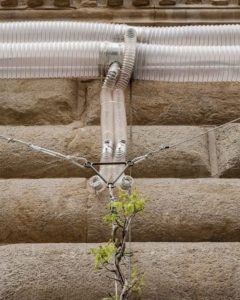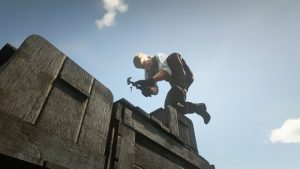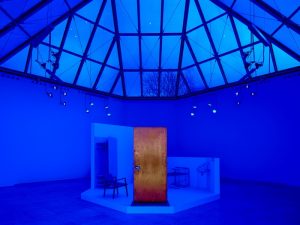While in Düsseldorf last month, i visited Carsten Nicolai‘s solo show at K21. I threw myself at it without thinking. I knew i wouldn’t get any of that political, socially-engaged discourse i spend my days immersed into. But i did know i’d be submitted to a fair amount of science, sleek techy objects and installations, along with electrical impulses, beeping, crackling, hissing and powerful sensory experiences. I wasn’t disappointed.
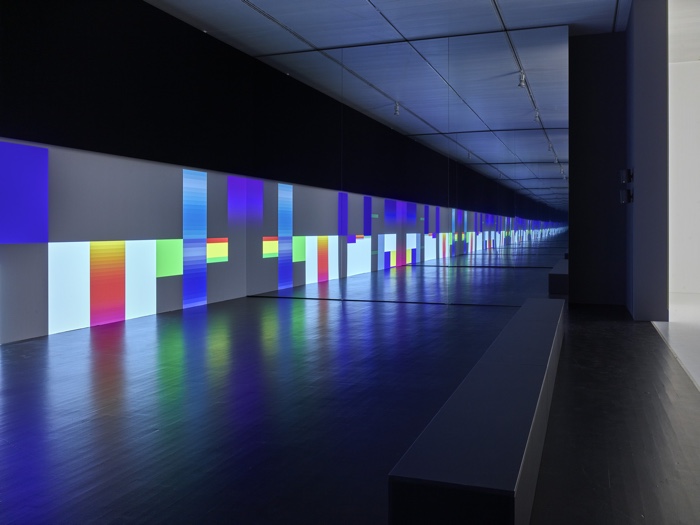
Carsten Nicolai, Unicolor, 2014. Installation view at K21. Photo: Achim Kukulies
Trailer of the exhibition Carsten Nicolai. Parallax Symmetry
Entering his solo show was like stepping into a parallel world. Mostly white, with hits of metals and block colours here and there. It’s cold, immaculate and elegant but never lifeless.
The title of the exhibition, “Parallax Symmetry”, is mysterious and slightly pompous at first sight but as you dig deeper into its meaning you have to admit that it perfectly encapsulate the breadth and spirit of the show. On the one hand, there’s parallax, a physical phenomenon described as the apparent change in the position of an object when the point of observation shifts. On the other, there is the striking symmetry of an exhibition derived from the tensions between light and dark, sound and silence, secrecy and knowledge, visibility and invisibility. The show packs on an impressive amount of physics, biology, mathematics but because the artist counterbalances the sciences with poetical mechanisms and a bit of careful chaos, you exit the building feeling slightly smarter but also more critical of the physical world around you.
Here’s a super quick walk through some of the work i enjoyed at this retrospective of artist and musician Carsten Nicolai (aka Alva Noto).
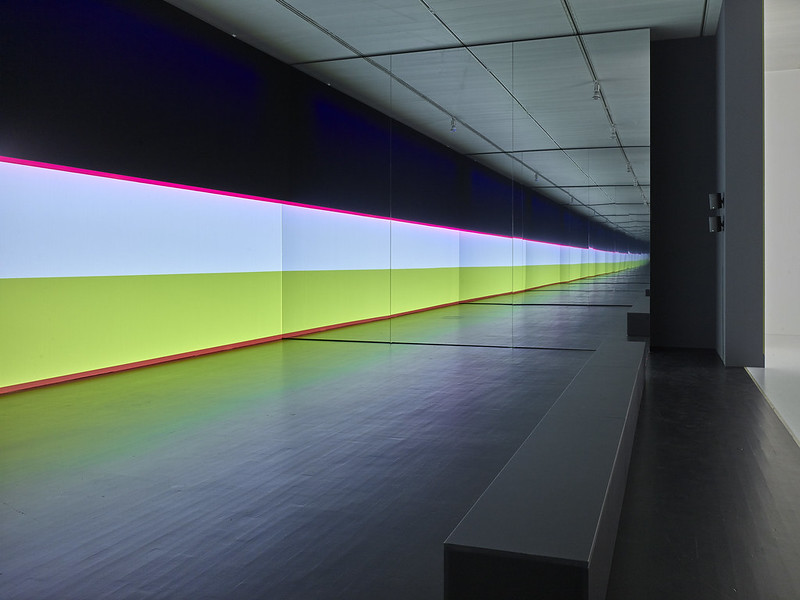
Carsten Nicolai, Unicolor, 2014. Installation view at K21. Photo: Achim Kukulies
Carsten Nicolai, Unicolor, 2014
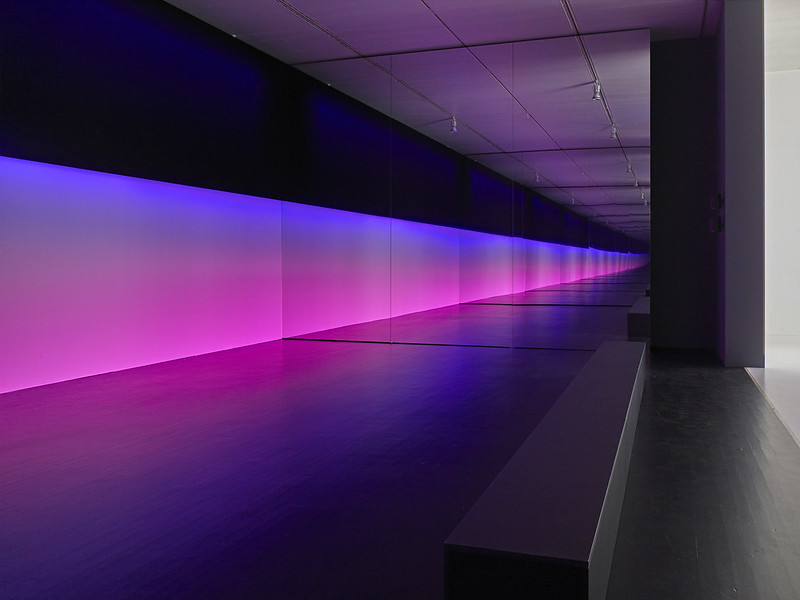
Carsten Nicolai, unicolor, 2014. Installation view at K21. Photo: Achim Kukulies
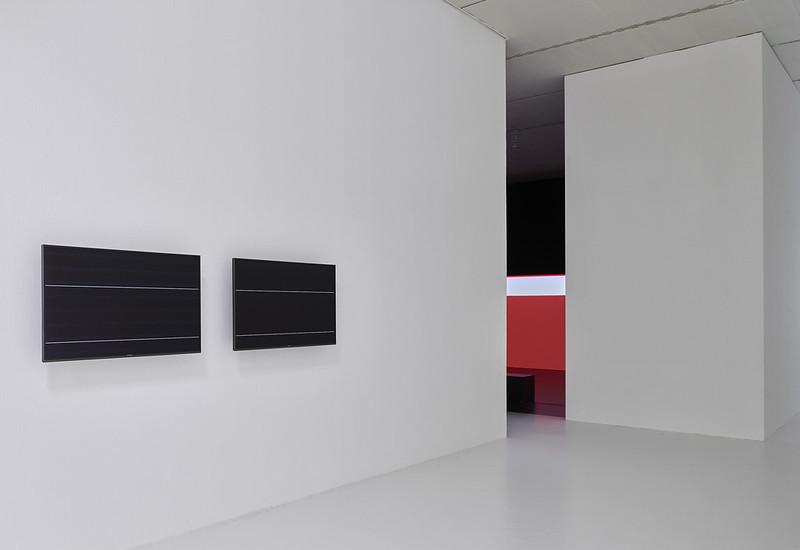
Carsten Nicolai, Unicolor, 2014. Telefunken, 2004. Installation view at K21. Photo: Achim Kukulies
unicolor explores the psychology of color perception. The installation is an hypnotising experience that wraps you inside a dark room where long strips of colours flow down the screens, are reflected in the mirrors on the side and make you realise how almost palpable colours and light can be. Until everything speeds up and flashes to blazing white. And the whole process starts again and you want to experience it all over one more time. Or even more.
The screening presents several modules of visual effects that play with the viewer’s perception. The RGB sequence, for example, moves faster and faster until our brains mix the colour and all we see is white.
The sound component follows a programme that translates the colour projection into sound. “The white noise goes with the white visual,” the artist told The Vinyl Factory, “but as the visual frequencies are assigned to red, purple and yellow, so too the amount of white noise fades.”
What makes Carsten Nicolai’s work so good is that you don’t need to understand the science behind it to fully enjoy the experience.
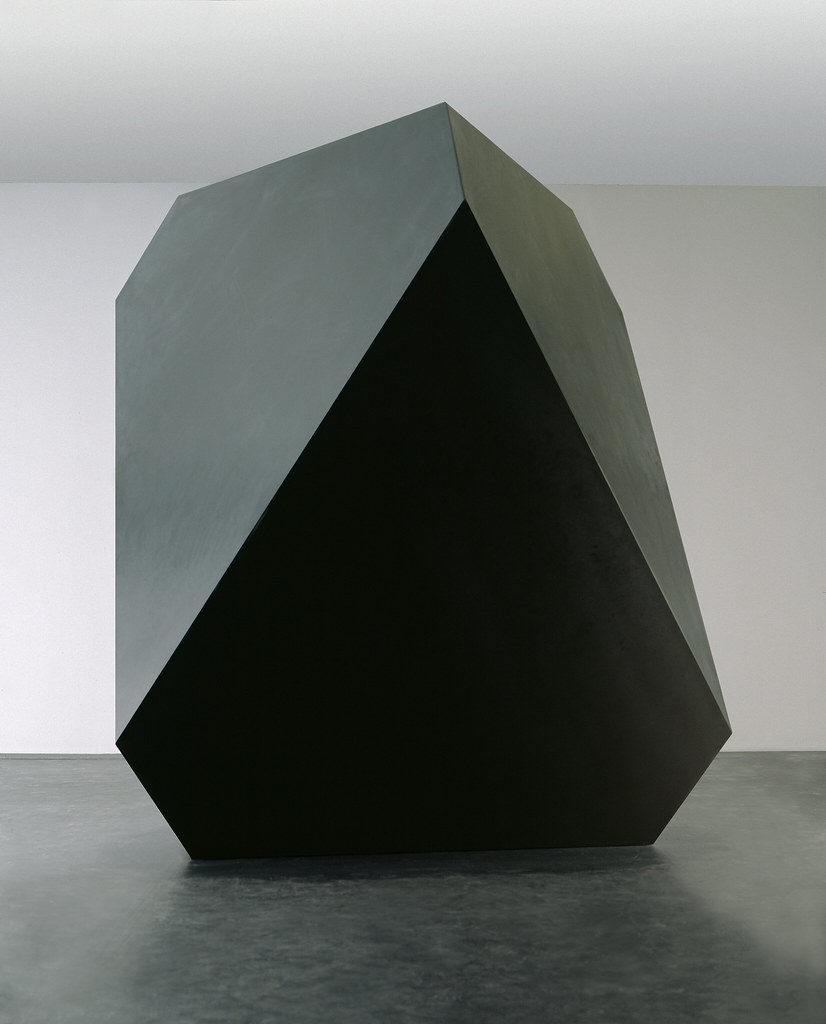
Carsten Nicolai, anti, 2004. Photo: Uwe Walter
The mysterious geometric shape of the sound sculpture anti was inspired by Dürer’s solid, a truncated triangular trapezohedron which appears in his engraving Melencolia I. anti is dark, mat, mysterious and its monolithic presence intimidates as much as it draws you in. The sculpture reacts to the magnetic field of the visitor’s body, enabling an interaction with the visitor. The interaction, however, is asymmetrical: anti absorbs and emanates information while the visitor remains in the dark as to its mechanism.
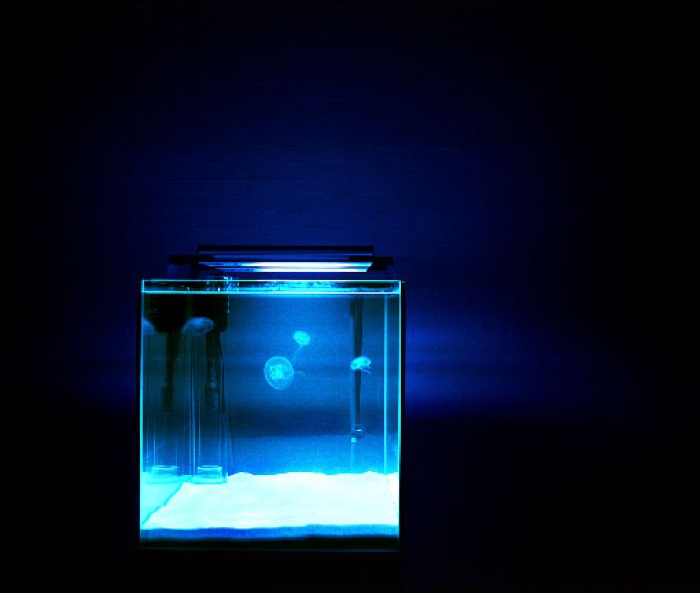
Carsten Nicolai, 98 % wasser, 2002
The jellyfish is a very unassuming animal. You know you should avoid them on the beach and maybe you even know that they don’t have brains, hearts or eyes. They are freaks. 95% of their body mass is water. The remaining 5% percent is made of structural proteins, muscles and nerve cells. It might not be much but it’s enough to make the jellyfish one of the most captivating and resilient creatures on this planet. They’ve been around for more than 500 million years, long before the dinosaurs thus. Some of them are luminescent, others have survived in outer space, some are even said to be immortal. They are not afraid of the climate crisis. In fact, the sneaky bastards might even take over the world.
98 % wasser is a work that features a jellyfish and a projection which, the project page says, is “a simplified model of the mechanism of a constantly moving shape that receives its directions from the computations of a predetermined formula. the juxtaposition of these two works demonstrates the impossibility to explain natural systems entirely through complex abstract models.”
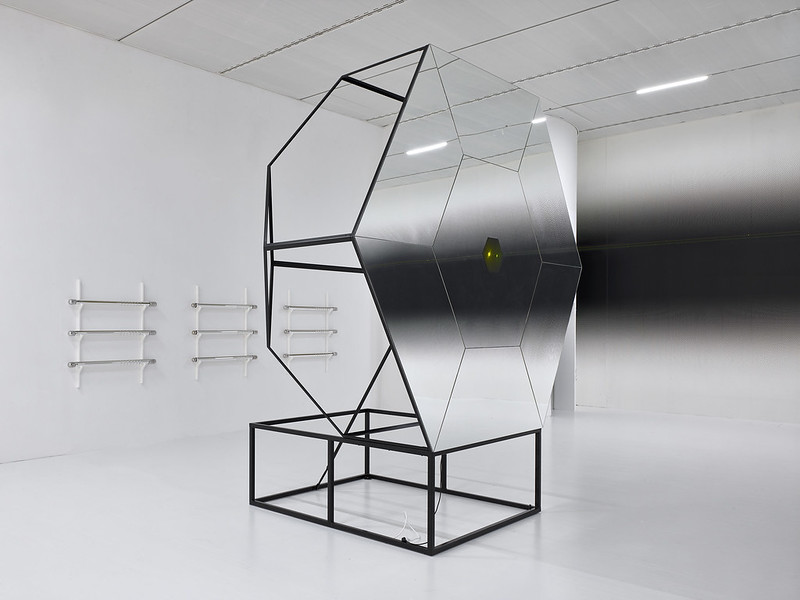
Carsten Nicolai, tele, 2018 / void, 2007 / raster gradient, 2009. Installation view at K21. Photo: Achim Kukulies
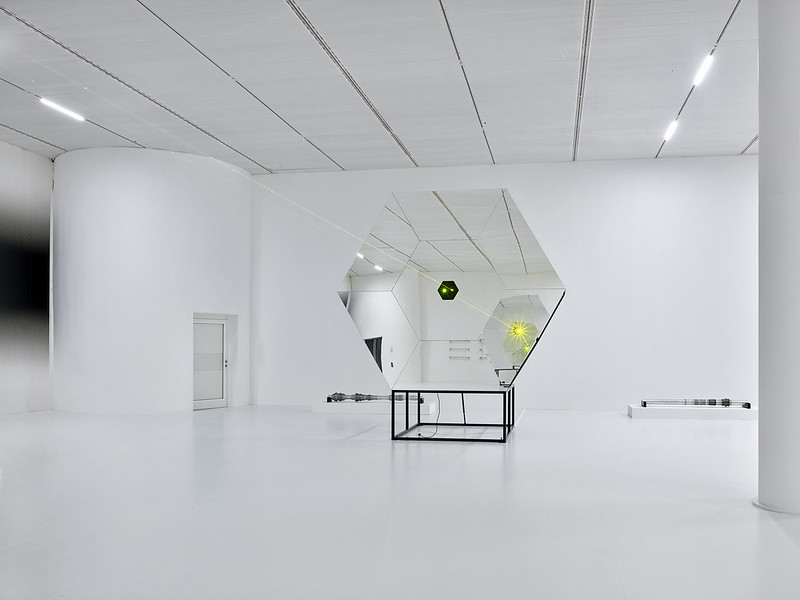
Carsten Nicolai. tele, 2018 / sekundenschlaf, 2007 / raster gradient, 2009. Installation view at K21. Photo: Achim Kukulies
tele is inspired by the peculiarity of quantum entanglement. Albert Einstein called the phenomenon “spooky action at a distance” but a more rational description of it would be that two electrons that might be galeries apart can share a connection whereby if one of these two particles changes, this has an immediate effect on the other, with no temporal delay, as if there was a “telepathic” connection between the two. Quantum physics has since confirmed the existence of the phenomenon. In fact, a few months ago, physicists from the University of Glasgow took an image of a form of quantum entanglement at work, offering thus the first piece of visual evidence of the puzzling phenomenon.
tele are two huge mirror sculptures in the form of a split Archimedean body that are connected to each other by laser beams. “The beams strike photocells that send out impulses to re-trigger the beams anew. this sets up a kind of feedback system linking the two objects through the lasers to establish „communication“. electromagnetic waves spread at the speed of light, and are perceived by the human eye as a stable, straight beam,” in which the eyes see dust dance and evoke a more terrestrial experience.
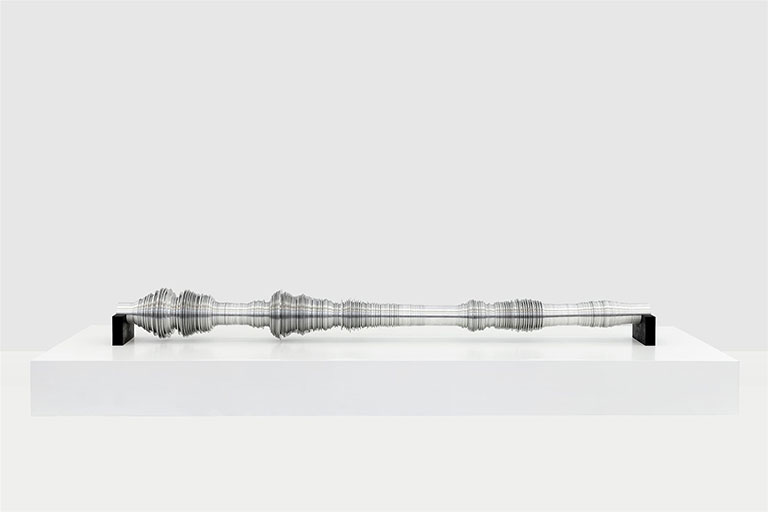
Carsten Nicolai, sekundenschlaf (microsleep), 2018
sekundenschlaf (microsleep) uses sound as a sculptural material. The work materialises in shiny aluminium the acoustic waveforms of a recording of the spoken word “sekundenschlaf” (microsleep) when flowing through space.
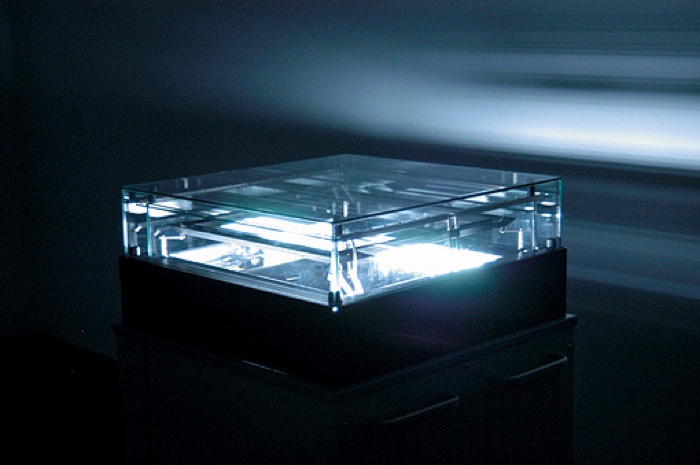
Carsten Nicolai, nebelkammer (Diffusion cloud chamber), 2002
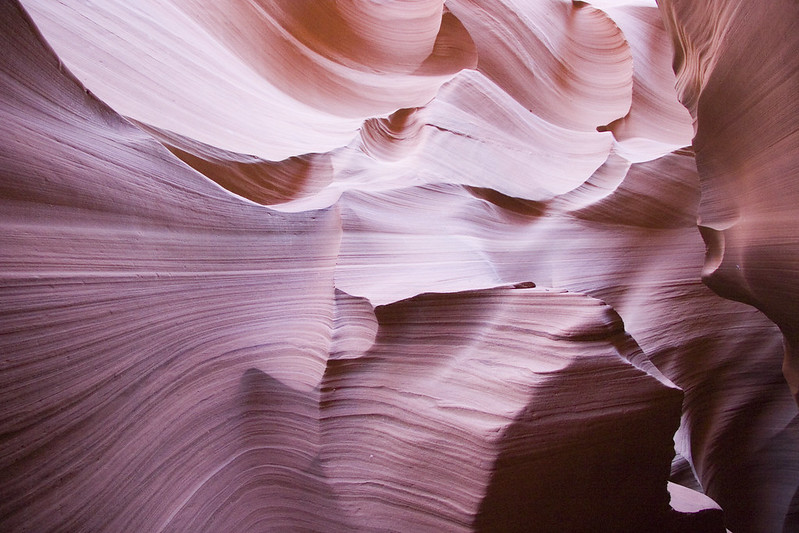
Carsten Nicolai, Future past perfect pt.1 (sononda), 2010 (Videostill)
Carsten Nicolai, Future past perfect pt.1 (sononda), 2010
Carsten Nicolai recorded a reading of Rainer Maria Rilke’s “Ur-Geräusch” to act as a soundtrack to the exhibition. The essay, published in 1919, is a very personal and fascinating take on the phonograph, the first device capable of reproducing sound.
Parallax Symmetry remains open until 19 January 2020 at K21 – Kunstsammlung Nordrhein-Westfalen in Düsseldorf.

